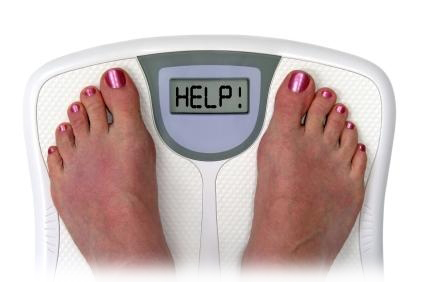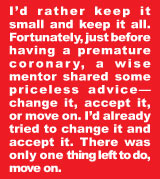Clinical Efficacy of Systemic Enzyme Support
by Joseph J. Colins, R.N., N.D
Linical observations and literature review both affirm the conviction that systemic enzyme support is an essential component for successful management of inflammation disorders and other conditions with immune system dysregulation due to its high degree of clinical efficacy. In addition to improving clinical outcomes in conditions with overt inflammation, such as rheumatoid arthritis, thrombophlebitis, pyelonephritis, prostatitis and psoriasis, systemic enzyme support is also effective in conditions with covert inflammation, such as osteoarthritis, angina, atherosclerosis, myocardial infarctions, and diabetes, to name a few. The adjuvant properties of systemic enzyme support have also been observed and documented for a number of cases including adnexitis, arthritis, papillomas and various forms of cancer. This article will familiarize clinicians with the therapeutic benefits of systemic enzyme support and review pertinent findings related to this treatment modality.
Enzymes maintain optimal function of the various body systems. The immune system depends on proper systemic enzyme function for regulating inflammation. Cytokine activity, and the clearance of excessive inflammatory cytokines, is regulated by proteases, systemic enzymes which degrade proteins. Systemic enzyme support can promote the clearance of proteins and peptides damaged by inflammation, reduce concentrations of advance glycation end-products (AGE’s) and protect cells by decreasing their receptor (RAGE’s) activation. Systemic enzymes can also down-regulate adhesion molecule activity in both inflamed and malignant cells.
Inflammation Observed
Chiropractic physicians are quite familiar with the five cardinal signs of inflammation: redness, heat, swelling, pain and loss of function—classically referred to in Latin as rubor, calor, tumor, dolor and functio laesa. These cardinal signs of inflammation diminish patients’ quality of life and may be a harbinger of serious disease. Clinically evident inflammation is recognized as the body communicating an inability to control proper cellular processes.
During inflammation, laboratory tests may reveal elevated erythrocyte sedimentation rate (ESR), C-reactive protein (CRP), circulating immune complexes (CIC’s), and some immunoglobulins (IgG, IgE, IgA and IgM). Excessive fibrin activity and increased amyloid beta-peptide are also noted with inflammation. Increases in cytokines demonstrate the immune systems involvement in inflammation.
Inflammation & Cytokines
Cytokines are signaling proteins and glycoproteins involved in cellular communications that play a dominant role in maintaining the normal inflammatory processes. Cytokines such as interferon-gamma (INF-γ), tumor necrosis factor-alpha (TNF-α), transforming growth factor beta (TGF-β) and interleukins (IL-2, IL-6, IL-12, IL-4, IL-5, IL-10) are produced de novo (on demand) in various cells as a direct response to stimulation of the immune system. They are produced by a wide variety of cells and are typically subdivided into two categories, Th1 and Th2. A balance between Th1 and Th2 responses is best for optimal health.
Th1 cytokines tend to produce the pro-inflammatory responses involved in antibacterial, antiviral and antifungal responses. Excessive Th1 responses can lead to uncontrolled tissue damage and may perpetuate autoimmune responses. A relative excess in Th1 is also observed in acute inflammation.
Th2 cytokines tend to produce anti-inflammatory responses and can counteract the Th1 mediated microbicidal actions. Excessive Th2 responses are associated with allergies and atopy (asthma, eczema, allergic rhinitis and allergic conjunctivitis). A relative excess in Th2 is also observed in chronic inflammation.
Excessive cytokines removal is mediated by α-2-macroglobulin, a naturally occurring high molecular weight plasma glycoprotein. Endogenous proteases bind with α-2-macroglobulin to create α-2-macroglobulin-protease complexes1,2 and transform the α-2-macroglobulin from its native form into the active form. Systemic enzyme support increases endogenous proteases and increases the activation of α-2-macroglobulin.
The newly activated α-2-macroglobulin-protease complex has increased binding capacity for certain cytokines,3 as well as other proteins and glycoproteins. The activated α-2-macroglobulin also binds to, and eliminates proteins damaged by oxidative stress or heat4 as well as amyloid beta peptide (A beta), a major component of senile plaques in Alzheimer’s patients.5-10
The α-2-macroglobulin-proteinase complexes also activate receptors to increase their own endocytosis. Therefore, these complexes, as well as the cytokines and damaged proteins, cellular debris, and unwanted peptides (such as amyloid beta peptides) that they carry, are quickly removed by macrophages and hepatic cells expressing α-2M-receptors.5,11,12 Increased endocytosis of these complexes and cytokines normalizes cytokine levels,13-16 and is responsible for the beneficial decrease and normalization of ESR,17-22 CRP,23-25 CIC’s,26-35 as well as IgG, IgE, IgA and IgM.36-38 Excessive fibrin activity39,40 and increased amyloid beta-peptide41-46 are also normalized by this process.
Since excessive cytokines are involved in auto-aggressive inflammatory processes, the removal of cytokines by the activated α-2- macroglobulin proteins controls the progression of autoimmune diseases.
Restoring Immunostasis
The clearance of excessive cytokines, the clearance of proteins and peptides damaged by inflammation, the inactivation of advance glycation end-products, and the inactivation of adhesion molecules in inflamed and malignant cells are all increased by proteolytic enzymes. A balanced immune system—immunostasis—can be manifested by using systemic enzyme support, which provides the essential proteolytic enzymes. Systemic enzyme support can be defined as a treatment modality which uses oral administration of exogenous proteolytic enzymes of animal origin (trypsin) and plant origin (bromelain) and rutoside in the form of enteric-coated tablets for supporting healthy and normal inflammatory processes in the body.
Systemic enzyme support (SES) which uses clinically validated formulations of enzymes from both plants and animals is able to influence immunity to reduce pain, swelling, inflammation, edema and lymphedema, and increase fibrinolysis, and the clearance of harmful immune complexes that are a result of antibody reactions. SES assists the body’s various regulatory and communications systems and supports the function of tissues at a cellular level and has application for degenerative diseases, autoimmune diseases, and as an adjuvant to improve efficacy of anti-infectives.
Conditions Treated with Systemic Enzyme Support
Joint health is profoundly improved by systemic enzyme support. It is an effective and safe alternative to NSAID’s in the treatment of painful episodes of osteoarthritis of the knee and hip.47-49 Systemic enzyme support protects and preserves joint cartilage significantly better than NSAID’s in rheumatoid arthritis.50-60 Gout therapies are significantly improved by the addition of systemic enzyme support.61 The addition of systemic enzyme support improved both articular signs and extra-articular manifestations in the majority of the children with juvenile chronic arthritis and was able to help limit the use of corticosteroids in some children. In addition to osteoarthritis, rheumatoid arthritis, gouty arthridities, and juvenile arthritis, systemic enzyme support has also been shown as effective in the treatment of psoriatic arthritis. It is fair to say that systemic enzyme support could be used in any form of arthritis.
Sports medicine is another area in which systemic enzyme support excels. Sport and exercise related muscle pain and inflammation provoked by a strong physical tension, excessive training and heavy competition rate are decreased with “excellent results” due to the selective interferences of enzymes with the pathophysiologic mechanisms of exercise induced inflammation.62 A prophylactic administration of systemic enzyme support in top athletes who are at risk of injury results in significantly reduced duration of injury symptoms and in absence from training and work due to such injuries. Systemic enzyme support also improves recovery from sprains, as well as shortened recovery from sport injuries severe enough to also require surgery.63-66
In addition to the benefits to the musculoskeletal system, systemic enzyme support also improves the health of other body systems, including the cardiovascular, nervous, respiratory, urinary, reproductive, and endocrine systems. Cardiovascular conditions that were notable improved with systemic enzyme support including angina pectoris67 myocardial re-infarction,68-70
thrombophlebitis and postthrombophlebitic syndrome71-74 as well as lymphedema in both upper and lower extremities.75-81
Systemic enzyme support can result in decreased number and duration of attacks in multiple sclerosis,82-84 decreased risk of developing Alzheimer’s Disease,85-90 and decreased frequency and severity of respiratory tract infections.91,92 Other conditions that are significantly improved with systemic enzyme support include psoriasis,93 eczema,94 urinary tract infections, recurrent kidney stones, diabetic nephropathy and pyelonephritis.95-99
Women using systemic enzyme support had decreased autoimmune and alloimmune infertility,100-102 chronic pelvic inflammatory disease (PID), acute adnexitis103-104 and fibrocystic breast disease.105-107 Bacterial and abacterial prostatitis, as well as associated sexual dysfunction108-110 were improved in men taking systemic enzyme support. Autoimmune thyroid disease treated with systemic enzyme support resulted in a significant decrease of TSH, anti-TG and anti-TPO, and allowed the lowering of L-thyroxine dosages.111
Clinical Conclusions
Systemic enzyme support is an effective treatment for the management of inflammation disorders and conditions with immune system dysregulation. It improves clinical outcomes of diseases which are difficult to manage and has an excellent tolerance and superior safety when compared to some conventional anti-inflammatory therapies.112-116 Published international literature describing the clinical efficacy of systemic enzyme support is based on formulations made by a Germany pharmaceutical company; Wobenzym® PS, a professional strength systemic enzyme formulation that is available through chiropractic physicians and other healthcare professionals.
Clinical observations and literature review both affirm the conviction that Wobenzym® PS is an essential component for successful management of inflammation disorders and other conditions with immune system dysregulation due to its high degree of clinical efficacy. More information can be found at www.SystemicEnzymeSupport.org, a non-commercial health education and wellness promotion website dedicated to teaching the clinical efficacy of systemic enzyme support.
 It is indeed true that every practitioner has a unique skill set, and each discipline is a master of certain elements of a given patient’s recovery process. Indeed, there is a philosophy, science, and art, which must be in harmony with every doctor, in every practice. Working inside an office with chiropractors, physical therapists, and medical doctors allows for better patient outcomes.
It is indeed true that every practitioner has a unique skill set, and each discipline is a master of certain elements of a given patient’s recovery process. Indeed, there is a philosophy, science, and art, which must be in harmony with every doctor, in every practice. Working inside an office with chiropractors, physical therapists, and medical doctors allows for better patient outcomes.


 • Diet Planning and Nutritional Support
• Diet Planning and Nutritional Support
 1. Do you feel tired most of the time?
1. Do you feel tired most of the time?
